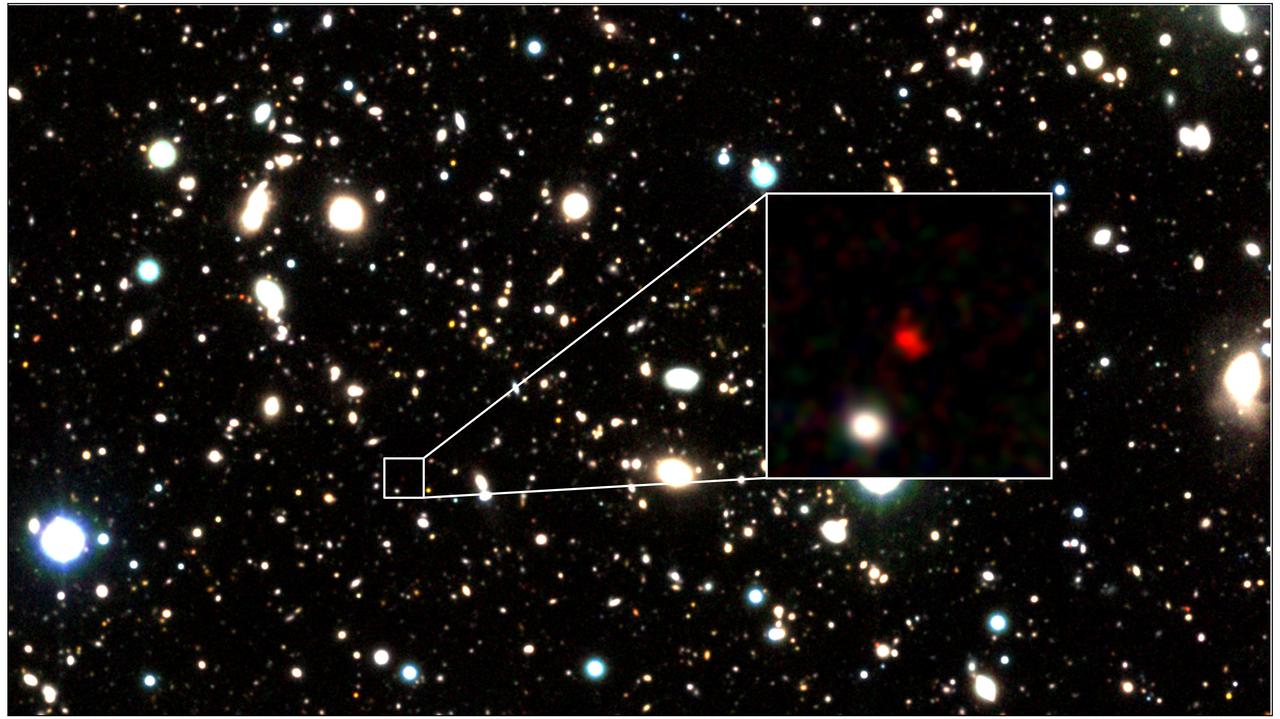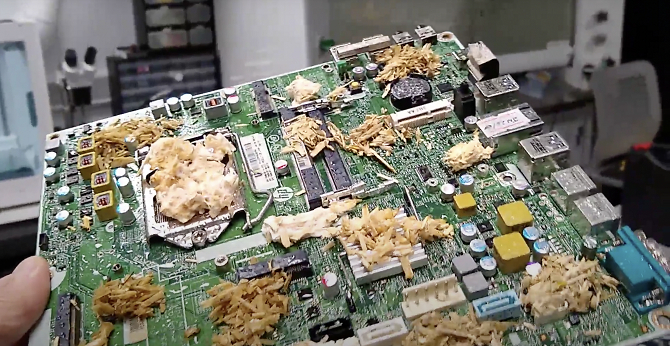The recently discovered object has been hailed in the universe as the most distant galaxy ever seen. According to the researchers, it is possible that it formed when the universe was still very young. We caught its glare from a distance of 13.5 billion light-years. Detecting objects from the beginning of space is very difficult, and often the most powerful ground-based telescopes have problems catching them. Scientists still have to fully investigate what made HD1 so remarkable.
Astronomers have revealed that HD1, as the galaxy was called, may have existed “only” 330 million years after the Big Bang. Its faint light, stretched due to the expansion of the universe, traveled 13.5 billion light-years to reach Earth.
Researchers aren’t quite sure what its features are. They wonder if it is a star-forming galaxy where stars are born, or a quasar (a compressed source of strong, continuous electromagnetic radiation with a massive star-like force) with a supermassive black hole at its center.
complex nature
If the second theory is correct, then the growth of the black hole to supermassive dimensions only “moments” after the Big Bang could challenge models of the formation and evolution of these objects.
“Answering questions about the nature of such a distant source can be complex,” notes astrophysicist Fabio Pacucci of the Harvard and Smithsonian Center for Astrophysics in Massachusetts. – It is like guessing the origin of a ship with a flag, at a great distance from the shore, in a strong wind and a thick fog. You can see some colors and shapes on the flag, but not all. He added that it is a long game of analysis and the exclusion of unexpected scenarios.
It is very difficult to detect objects from the early universe. Even quasars, the brightest objects in space, dim across vast swaths of space-time, and Earth’s most powerful telescopes often have trouble catching them.
1.2 thousand hours of observation
HD1 was discovered as part of a study that aimed to discover the first galaxies in the universe. His results are described in detail in an article that appeared in The Astrophysical Journal. Four powerful infrared light telescopes were used in the research: Subaru, Vista, UK infrared and the Spitzer Space Telescope. More than 1,200 hours are devoted to taking notes.
“Finding HD1 among more than 700,000 objects has been very difficult,” astronomer Yuichi Harikan of the University of Tokyo admitted. The red color of HD1 surprisingly matched the predicted characteristics of a galaxy 13.5 billion light-years away. It gave me goosebumps.”
HD1 GalaxyHarrikan and others
red shift
The red color appeared as a result of a phenomenon known as redshift. redshift). It occurs when the light source moves away from us. Then the wavelength of the light increases towards the red end of the electromagnetic spectrum. As the universe expands, other galaxies show a redshift. The greater the distance in spacetime, the greater the shift towards this color. This effect allows astronomers to calculate how long the light has traveled to reach us. As astronomers clearly explain, the more space objects we have, the more we look into their past.
However, the light from HD1 can be confusing. It is very bright in the ultraviolet range, which indicates that very dynamic processes occur there. At first, the researchers thought it was normal stellar activity – until they calculated how many things it would take to produce that amount of light.
It was an incredible number, over 100 stars a year. This is 10 times more than one would expect from such an ancient galaxy. However, it can be concluded that the stars there do not have to undergo the same processes as those we have already met.
It can undermine the rules we know
“The first group of stars that formed in the universe were denser, brighter and hotter than modern stars,” Pacuchi noted. “If we assume that the stars formed in HD1 are the oldest stars, also known as group C stars, their properties are easier to explain. In fact, these stars are capable of producing more ultraviolet light than ‘normal’.” He added that this may explain the extreme brightness of the rays, he added. Ultraviolet for HD1.
If the galaxy is a quasar with a supermassive black hole, then the glow it generates can be interpreted as flares from devouring matter. A team of scientists has calculated that a supermassive black hole would need about 100 million times the mass of the Sun to produce such light.
This size seriously undermines the growth patterns of supermassive black holes.
“The black hole of HD1, which formed several hundred million years after the Big Bang, must have grown from a supermassive source at an unprecedented rate,” said astrophysicist Avi Loeb of Harvard University and the Smithsonian Center for Astrophysics. “Once again it turns out that nature is more creative than us,” he added.
The team hopes that the following observations made available by the James Webb Space Telescope will reveal more details from the beginning of the universe.
Main image source: Harrikan and others

Echo Richards embodies a personality that is a delightful contradiction: a humble musicaholic who never brags about her expansive knowledge of both classic and contemporary tunes. Infuriatingly modest, one would never know from a mere conversation how deeply entrenched she is in the world of music. This passion seamlessly translates into her problem-solving skills, with Echo often drawing inspiration from melodies and rhythms. A voracious reader, she dives deep into literature, using stories to influence her own hardcore writing. Her spirited advocacy for alcohol isn’t about mere indulgence, but about celebrating life’s poignant moments.









